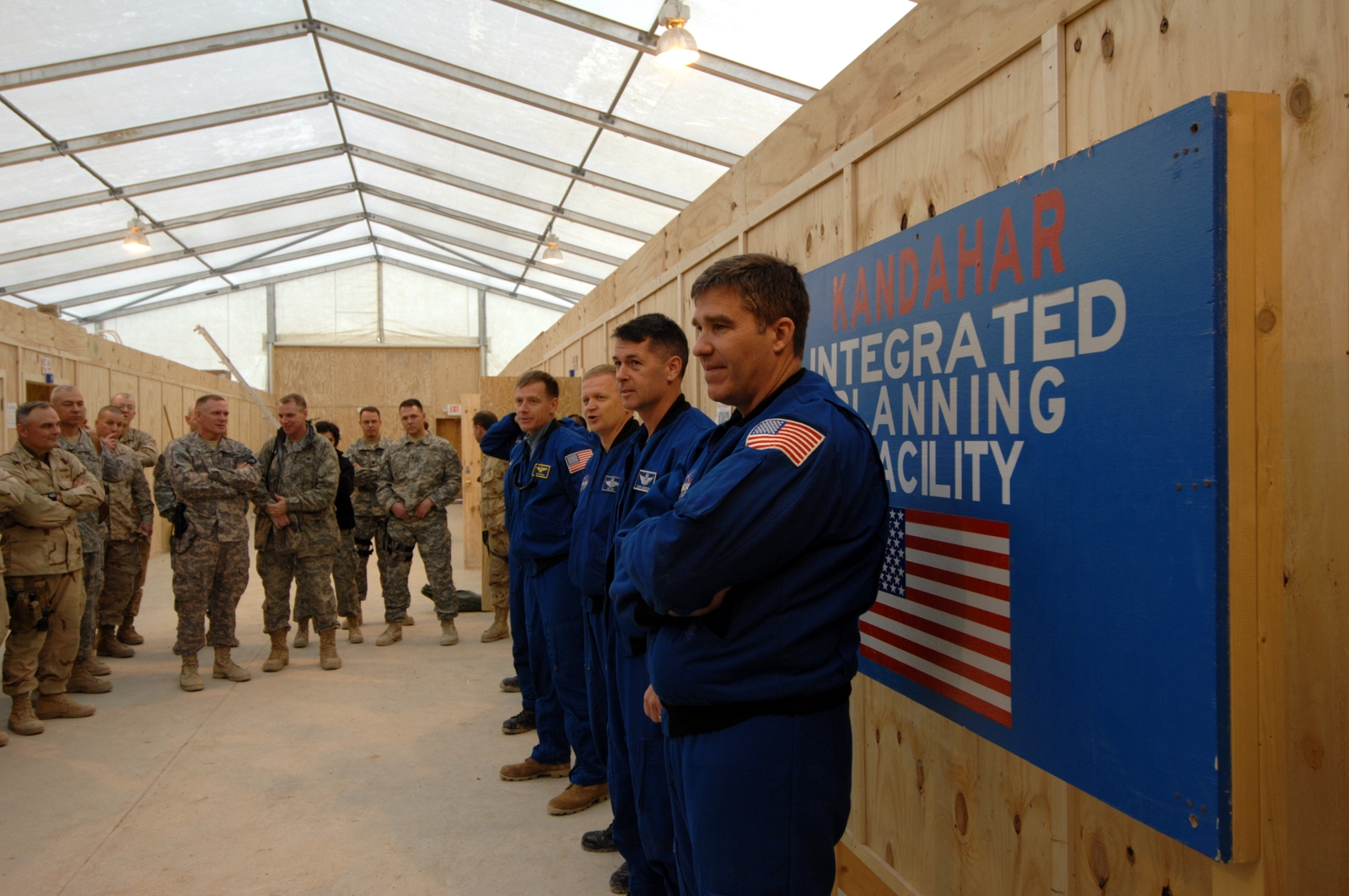Our crew departed Bagram, Afghanistan, in the afternoon on 30 Jan. We flew on a metroliner (small prop plane) for about an hour and a half and arrived at the Kandahar International Airport, Afghanistan. It was a very different place than anywhere we had been. The base was run by Canadians and Brits. There were many other coalition partners there as well including the Dutch, Romanians, Germans, French and Polish. We checked into our rooms, then headed to the DFAC (dining facility) for lunch. Our escort was CPT Analise Thompson, West Point class of 2004.

Our first stop after lunch was a logistics battalion from Fort Bragg, NC – “the Superchargers.” They were really nice folks and our crew had a great time interacting with them for about an hour.
We then left for the flight line where we talked with Task Force Wings – an Army aviation task force consisting of Blackhawk, Chinook, Apache and Kiowa Warrior helicopters. I ran into several old friends in their headquarters. We debriefed them on our space flight for about 30 minutes.
Afterwards, I had the privilege of presenting a flown Army Aviation Association of America (AAAA) coin to a very deserving Warrant Officer – CW3 Rob Forney. Rob is a Maintenance Test Pilot for the new UH-60M helicopters. AAAA is very excited about this and will put the pictures in their magazine as well as highlight this event at the annual AAAA convention in May.

These soldiers gave us a quick tour of the Apache, Chinook and Kiowa Warrior. We then moved down the flight line to the Air Force unmanned aerial vehicle wing. We showed our mission video and answered questions with these fine airmen and officers. What a great day for our crew. It was extremely rewarding for me to personally thank our service members for the work they are doing and the sacrifices they are making for our country.
After breakfast the next morning, we heard our flight was delayed several hours. We toured the “boardwalk,” which was a recreation area for the troops with a hockey rink, volleyball courts, Tim Horton’s doughnut shop, French pastry shop and even a beauty shop. CPT Thompson quickly found more units for us to visit. We went to the Sea Bees (Navy construction battalion) and Army engineers first.

They were wonderful and have a tough task ahead of them. They are responsible for building a new city on the airfield for about 25,000 troops who are expected to arrive in the spring. We talked with them for about 45 minutes. We learned a lot about what they are doing and the challenges they face. After a short visit to the MWR (Morale, Welfare & Recreation) facility, we went back to the flight line to see the Predators and Reapers (unmanned aerial vehicles) and meet several of their pilots and maintainers. As we learned, this is an amazing capability which we are exploiting on the battlefield.

After a quick lunch, we headed to the flight line again to depart for Bagram. Our flight was delayed an hour or so. The reality of war hit home while we were waiting when the Medevac UH-60 departed to pickup casualties from an IED (Improvised Explosive Device). A Canadian vehicle struck an IED – 1 killed, 1 badly wounded. A tough way to end our incredible trip to Kandahar. We departed on a CASA 235 headed back to Bagram.
— Lt. Col. Shane Kimbrough, STS-126 mission specialist (US Army)

